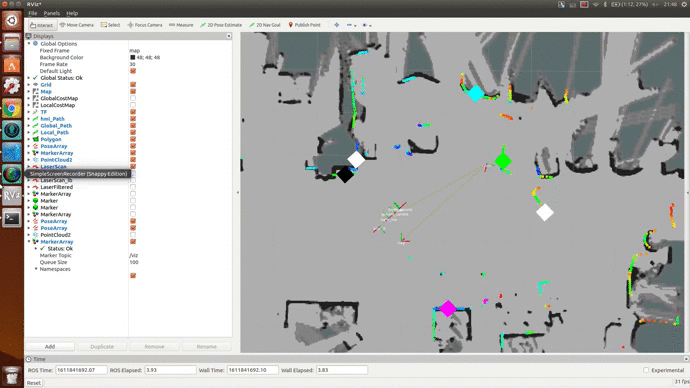-
Notifications
You must be signed in to change notification settings - Fork 229
New issue
Have a question about this project? Sign up for a free GitHub account to open an issue and contact its maintainers and the community.
By clicking “Sign up for GitHub”, you agree to our terms of service and privacy statement. We’ll occasionally send you account related emails.
Already on GitHub? Sign in to your account
can not track small dynamic obstacles when using a single-line laser #41
Comments
|
Hi @UyaSong , You can also increase the number of clusters so that you can have more objects detected and tracked which will likely include the (smaller) human-leg point clouds. |
|
Hi @praveen-palanisamy , |
|
It's been quite some time since then that I am not able to recall all the details but the implementation was using PCL. Specifically the pcl_filters (pcl_segmentation also is useful for filtering background planes). There's a tutorial demonstrating the use of the I hope that helps you filter the (static/baground/noisy) point clouds. |
|
Thanks a lot! I will have a try. |
hello,I have some questions in Point cloud topic release and acceptance,Can you add me? Pay for some advice,qq:2335702163 |
Hi @mshmsh1512987 , you can refer to below link for point cloud topic subscribe and publish. It works well. @mshmsh1512987 |
@UyaSong Hi, I have a similar use case. Did you figure out how to efficiently filter the scans for use with this package? |
|
I have developed a filter which improves the package in case a prior static map is given: |
Hi @praveen-palanisamy , thanks for sharing your work, it's quite helpful to me.

I want to run this pkg on a mobile robot with a single-line laser, but it can hardly detect the dynamic obstacle (human legs), like the video shows.
I don't know whether I had used it correctly. Maybe I should increase the number of cluster and kalman filter. Or should I use the featureDetection class?
The text was updated successfully, but these errors were encountered: